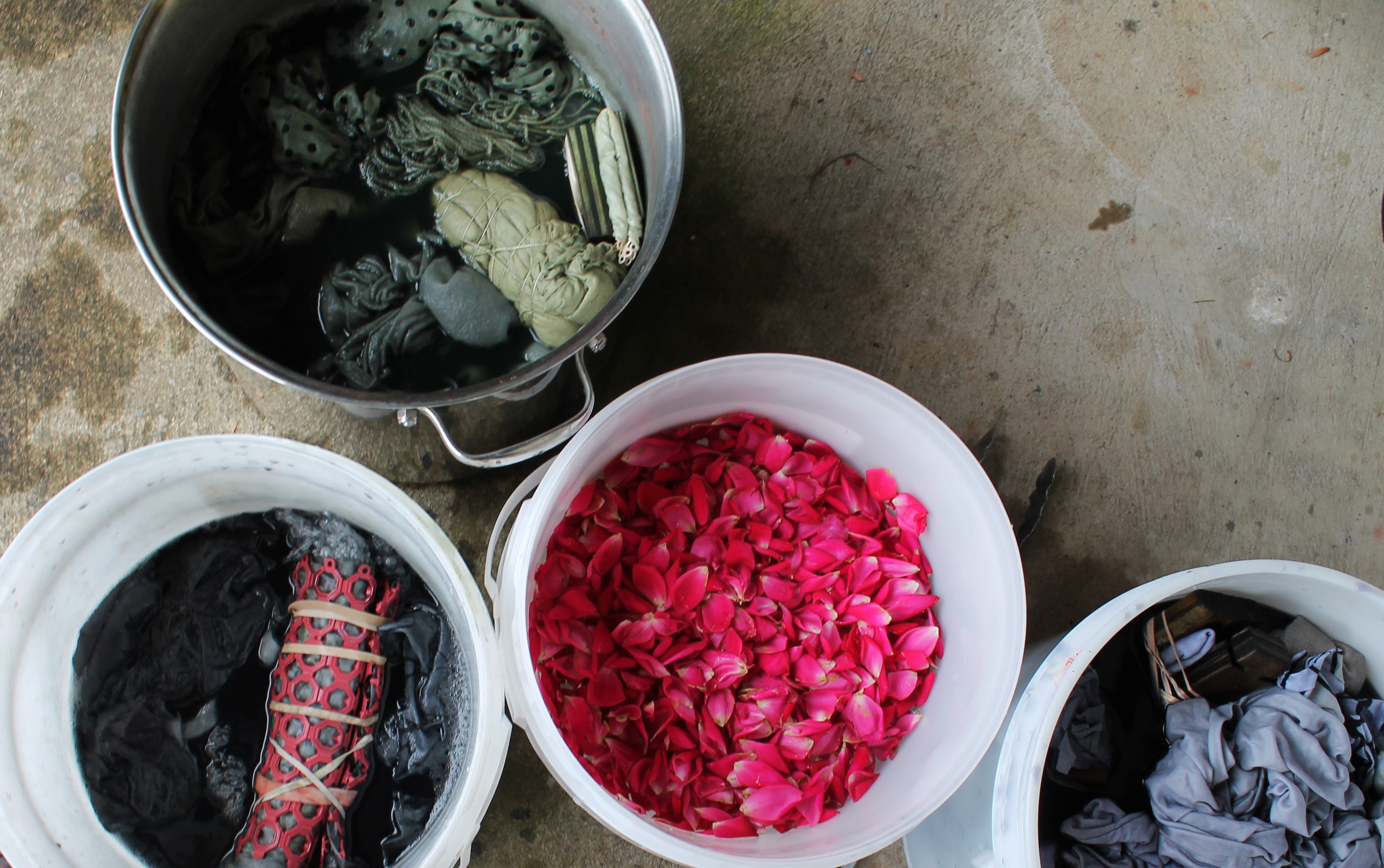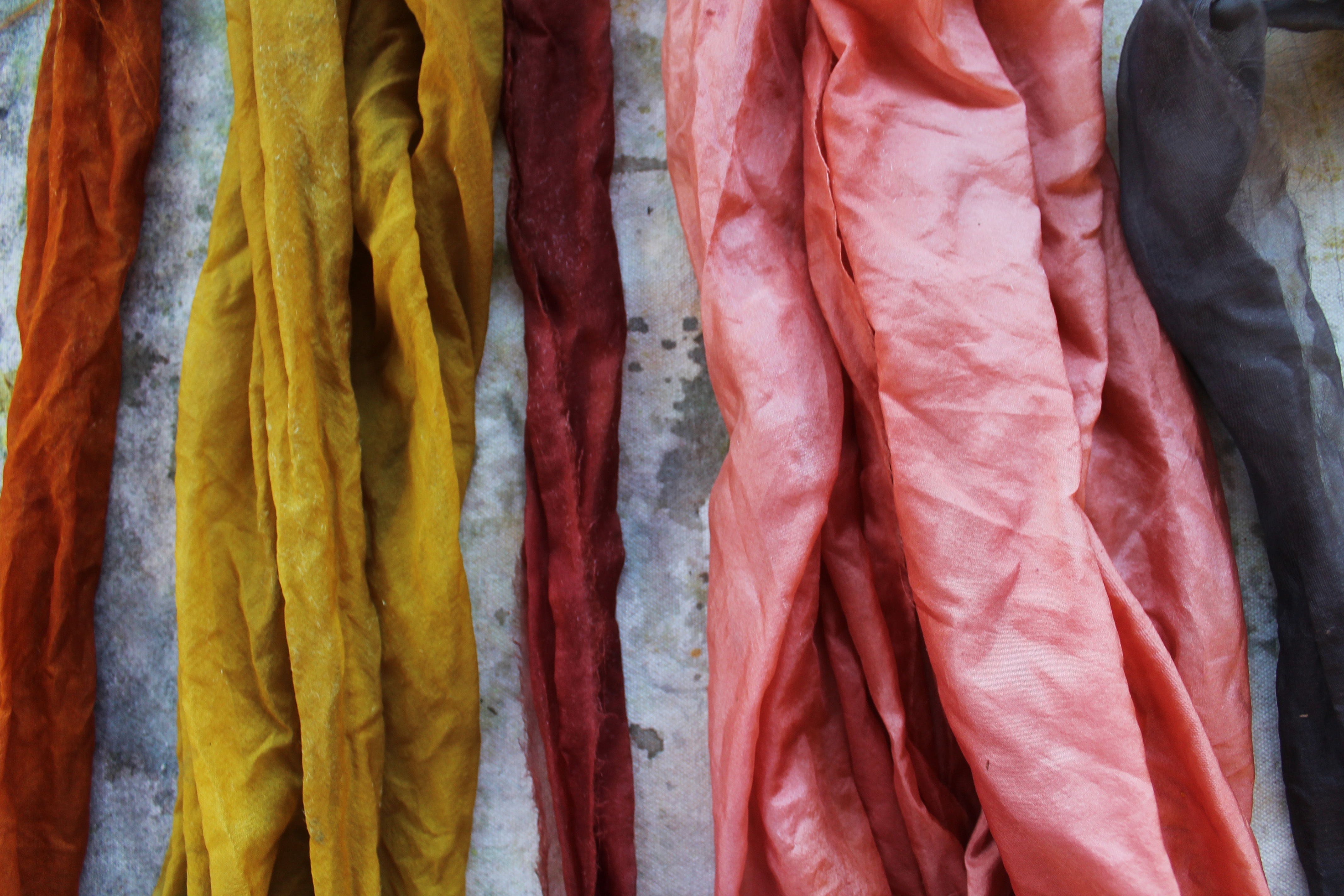ONLINE• naturaldyeworkshop.com• slowfiberstudios.com• permacouture.org
Transforming weeds, kitchen scraps and other natural elements into a rainbow of textile dyes is a concept as old as civilization itself, with dye vats dating to as early as 2000 B.C.
Now, these homemade pigments - some long abandoned in favor of more startling chemical dyes - are being rediscovered in kitchens and studios around the world.
"There's been a huge rise in interest over the last two or three years," said Sasha Duerr, author of "The Handbook of Natural Plant Dyes," who teaches natural dye techniques and has founded the Permacouture Institute, which promotes sustainable textiles. "There's a lot we have to revisit and learn."
Yoshiko Wada, who has produced films about natural dyes and led dye tours to France, India and Japan, said much of the appeal is that "the process slows us down and reconnects us to the environment."
At a time when focus is returning to locally produced goods, these sustainable natural colors reflect their surroundings. The soft welcoming blues of painted shutters in the south of France are from indigo. The golden yellows of Provence are of ochre. And from the American desert Southwest, those dazzling reds and fuchsias are made from cochineal, a parasite that lives on cactus.
Onion skins (yellows), walnut hulls (browns), avocado peels and pits (pale pink), marigolds (yellows), sumac leaves (brown), mushrooms and lichens (with their rainbow of possibilities), cochineal (fuchsias and reds) and madder root (oranges and reds) are traditional favorites. Coffee grounds and old tea bags also are great for shades of tan and brown. Nettle yields greenish tints.
Even succulent plants can be used to make dyes, said Duerr, who recommended aloe for pinks and yellows and jade plants for purples and black. Wild fennel, abundant in northern California, yields fluorescent yellows "so bright they hurt your eyes" if harvested while in bloom.
"It's like making tea. You boil the plant and then simmer," she said. And like cooking, the results depend as much on the chef as on the recipe. "The beauty of it is that you can take something from the back of your closet and give it new life using just the waste from your dinner."
Any plants containing sufficient tannins can be used to achieve colorfast fabrics without additives, known as mordants. But there are also natural mordants, such as rhubarb, sumac, pomegranate rinds, lemon juice or vinegar, according to Sonia Uyterhoeven, gardener for public education at the New York Botanical Garden. With a mordant, sumac fruit yields red pigment and indigo yields its classic shades of blue. Cream of tartar can be used to brighten colors, and salt to intensify them.
"Just about anything you feel comfortable around ... but there are some plants that should be avoided," she warned.
Lily of the Valley is toxic and could harm the water supply if you dump it down the drain, she said, and although American Indians traditionally used bloodroot for natural dyes, "it's not a large plant, so if you start using it for dye you're depleting the population."
The beautiful purple berries on pokeweed plants, although tempting, are poisonous and should also be avoided, Uyterhoeven said.
To be safe, designate a pot specifically for dyeing projects, and use gloves to protect your skin. If you're dyeing in the kitchen, work in the sink and avoid surfaces used for preparing foods. Although natural-dyeing books from the '60s, '70s and '80s are plentiful, experts warn that books from that period often recommend using toxic substances like chrome, copper or even lead as mordants.
As a rule, leaves should be chopped, the more finely the more colorful the pigment; berries should be mashed with a potato masher; and bark and roots can be shredded or ground.
Wrapping the natural materials in muslin or putting them in some old pantyhose makes projects neater and easier.
If boiling berries, sometimes the longer they are boiled, the lighter the pigment, so for darker shades either add more berries or let the water cool slowly.
But onion skins are the classic home dyeing project for beginners.
"We do onion skins with kids here at the botanic garden. The yellow color is fantastic," said Uyterhoeven. "People can go to farmers markets or grocery stores and get loads of onion skins, because people usually just throw them out."
First, peel the papery red or yellow skins from lots of onions, ideally enough to fill your biggest pot. Aluminum pots make for a brighter color dye, but any pot will work. Cover the skins with water and bring to a boil. Then simmer for at least an hour.
Next, in a separate pot, soak the natural fabric or yarn you'd like to dye in hot water for at least 15 minutes. Wet fabric absorbs dye much better than dry fabric does. For tie-dyed fabrics, just fold and then wrap rubber bands around the still-dry fabric first.
Strain the onionskins from the big dye pot and discard them, then bring the pigmented water to a boil again, and place your wet fabric or yarn in the pot. Simmer for at least an hour, stirring as needed to keep the fabric submerged. Let the fabric cool in the dye bath or, better yet, soak for a night or two.
Rinse the fabric in cool running water until the water runs clear and hang dry. All dyed fabrics should be washed before being used in any craft.


